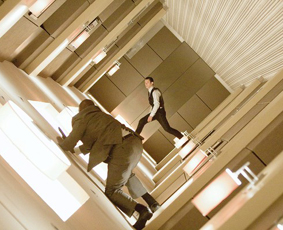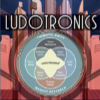Tag Archive for ‘dramatic structure’

Storytelling Technique, Western Culture Edition
Applies to around 95 % of popular books, movies, tv-shows, or video games. Add meta bonus for rationalizations in literature vs. genre / highbrow vs. lowbrow manifestos.

German »Tatort«: Learn the Elements of Dramatic Structure in Less Than Three Minutes!
I just love everything meta-.

“Stay Hungry, Stay Foolish”: Steve Jobs’ Stanford Commencement Address 2005
“You can’t connect the dots looking forward, you can only connect them looking backwards.”

Skiffy
“The gleaming synthetic permapolish leather holster held a proton blaster. Bat Durston pulled out the deadly weapon and thumbed the power pack release.”

Narrativity and Diachronic vs. Episodic Self-Experience: Observing the Self
Is that a Cartesian Theater which I see before me? What Strawson’s self-observation lacks in methodology, it makes up for with psychological entitlement.

Inception Dream Architecture: Infographic Contest Winner
I started to try and sketch Inception’s dramatic structure (in words, not in pictures), and this greatly helps: Co.Design’s Inception Infographic Contest!

Narrativity and Diachronic vs. Episodic Self-Experience: Reading Literature
If that’s all the witnesses and the testimony you can muster in your favor, you might as well try and get to Mexico while you still have time.

Narrativity and Diachronic vs. Episodic Self-Experience: Checking the Evidence
You’d think when Strawson takes on the psychological Narrativity thesis and lets loose with both barrels, he’d load his gun with something substantial.

Narrativity and Diachronic vs. Episodic Self-Experience: Setting the Scene
According to Strawson, life is experienced in a “diachronic” or “episodic” kind of way: the former is compatible with psychological narrativity, the latter not.

Dramatic Conflict and the Future of Science Fiction
Dramatic conflict in science fiction connects to advanced aspects of a future society. With our accelerating technological progress, this is becoming difficult.

Travesty, Parody, and Advertising with a Purpose: #Prop8
Travesty is a powerful form of storytelling not despite, but because we know what’s going to happen. We’re already on the lookout for what’s different.

Turns and Flashbacks, Junctions as Junctures
Flashbacks are a powerful storytelling device, especially when used for missed turns and missed junctions-as-junctures.

Diegesis (“Excuse me sir, a what?”)
Diegesis is a technical term literature can do without. Mimesis too, but we should keep that one simmering on the back of the stove for historical reasons.

What’s in a Tale
While there certainly are differences between a tale and a story, they’re not necessarily what James Hull makes them out to be.

Foreboding, Part II
Two foreboding techniques tested in (pen & paper) roleplaying storytelling that were supposed to raise suspense and broaden the picture, but failed miserably.

Foreboding, Part I
To raise suspense early on before readers can identify with the characters, some use foreboding techniques in form of digressions. This has some drawbacks.

The Little Boat of Horrors
The exposition of Stephen King’s It is a great example how to switch from summarizing to real-time action and back again to create suspense by superior pacing.

Tell, Don’t Tell
Writers never show, they tell—but often fall for the cinematography metaphor of fiction writing. Good pacing consists of both narration and summarization.





